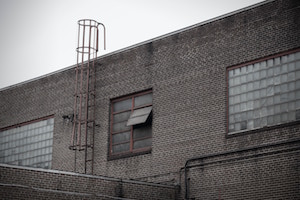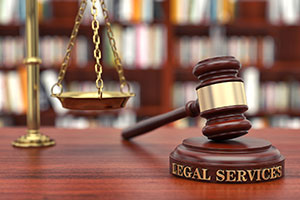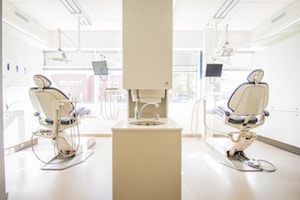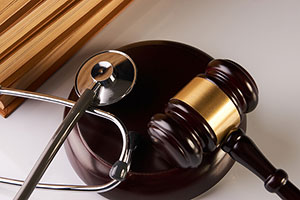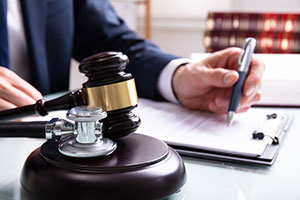Jeffrey Klingenberg fell as he was stepping from a roof onto a ladder. He sued Vulcan Ladder for manufacturing, and GP International for selling, a defective ladder. He also sued for breach of warranty, alleging that a label stating the ladder had a “working load” of 300 pounds created an express warranty.
A jury rejected the product liability claim but returned a verdict in Klingenberg’s favor on the warranty claim. The jury awarded him about $2.4 million in damages.
On appeal, the defendants argued that Klingenberg’s expert was unqualified and that his methodology was unreliable. The Court of Appeals for the Eighth Circuit rejected those arguments and affirmed the judgment.
Expert Testimony
Stephen Fournier testified as an expert for Klingenberg. Fournier is a Licensed Professional Engineer. He opined that the ladder was defective and that the defect caused Klingenberg to slip. The defense expert contended that Klingenberg slipped on snow and that the ladder was not defective.
Both experts agreed that the ladder met standards set by the American National Standards Institute (ANSI). Fournier testified that the ANSI sets minimum standards, that products can be unsafe even if they meet those standards, and that no ANSI standard covered the defect at issue.
After evidence was concluded but before the case was submitted to the jury, the defendants moved for judgment as a matter of law. They contended that Fournier’s testimony should be stricken because he was not qualified to render the opinions he expressed. They also challenged the reliability of Fournier’s methodology.
The trial court rejected the challenges. The court therefore denied the motion for judgment, which was premised on the failure to prove causation in the absence of Fournier’s testimony. The defendants appealed.
Expert’s Qualifications
The Court of Appeals easily determined that Fournier was qualified to testify as an expert in ladder safety. Fournier is a civil engineer who is OSHA-certified in fall protection. He has investigated more than 1,000 construction accidents, including 200 that involved ladders. He had been qualified as an expert in more than 20 previous cases regarding ladder safety.
The defendants claimed that Fournier was unqualified because he had never designed an articulating ladder and had never served on an ANSI committee. The Federal Rules of Evidence, however, simply require an expert to be qualified by knowledge, skill, training, experience, or education. Since Fournier easily met that qualification standard, the argument that he lacked additional qualifications did not bar the admissibility of his testimony.
The argument that an expert might be even more qualified by adding additional experience to a resumé goes to the weight the jury should give the expert’s testimony. Since that argument does not support a conclusion that an expert should not testify, the Court of Appeals agreed with the trial judge’s decision not to strike Fournier’s testimony on the basis of his qualifications.
Expert’s Methodology
The federal rules require an expert’s testimony to be based on sufficient facts, a reliable methodology, and a reliable application of the methodology to the facts. If those standards are met, it is the jury’s function to determine whether the expert’s opinions are worthy of belief.
The defendants argued that Fournier’s methodology was unreliable because he did not test his theories on the damaged ladder or on a similar model. The court noted that physical testing is not required in every case. The question is whether the expert used a reliable methodology, not whether some other methodology might have been used instead.
Fournier based his opinion on a variety of facts, including information provided by Klingenberg about how the accident happened, photos of the accident scene, and his examination of the damaged ladder and of competitors’ ladders. He concluded that installing retaining straps, as competitors did, would have made the ladder safer.
Fournier based his opinion on general engineering principles and on his experience in ladder investigations. That experience included the investigation of a competitor’s ladder that failed when its retaining strap was removed. The failure was similar to the failure of the ladder from which Klingenberg fell.
Given Fournier’s knowledge and experience, he did not need to test the ladder to determine that the addition of retaining straps would have made the ladder safer. Because Fournier applied a reliable methodology to sufficient facts in a reliable way, his testimony was admissible.
Sufficiency of Evidence
The jury rejected the claim that the ladder’s design was defective, possibly because it was not satisfied that a reasonable alternative design was available in the year the ladder was purchased. The jury agreed, however, that a label stating the ladder was rated for a “working load” of 300 pounds created an express warranty and that the warranty was breached. Since the warranty claim did not depend on the availability of an alternative design, the verdicts were not inconsistent.
The label stated both that the ladder had a 300-pound working load and that the ladder was manufactured to ANSI standards. The defendants argued that they only warranted that the ladder supports a 300-pound load as required by ANSI standards. Because Fournier agreed that the ladder met ANSI standards, the defendants argued that Fournier admitted that the warranty was not breached.
The appellate court rejected that argument. The language about ANSI standards and the working load language appear on different parts of the label. The jury was entitled to view the statements as two separate warranties, not as a single warranty that somehow merged the two statements.
Fournier testified that the 300-pound working load label meant that the ladder is designed to hold a 300-pound person safely in any of its configurations. While the jury could consider evidence that the ladder passed certain ANSI tests, the label did not simply warrant that the ladder satisfied ANSI standards. Expert testimony permitted the jury to conclude that the defendants warranted that the ladder could be used safely by a person with a 300-pound load.
Evidence that the ladder met a minimum safety standard did not foreclose the possibility that the ladder’s condition did not satisfy the warranty. Since Fournier testified that the ladder was not safe, the jury was entitled to conclude that the warranty was breached. The court therefore affirmed the judgment in Klingenberg’s favor.


